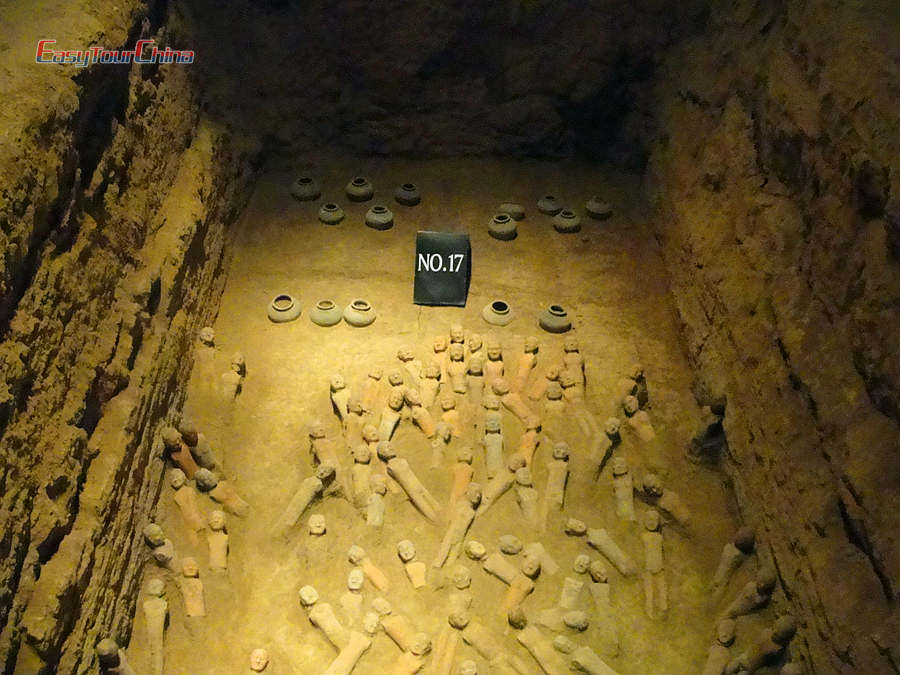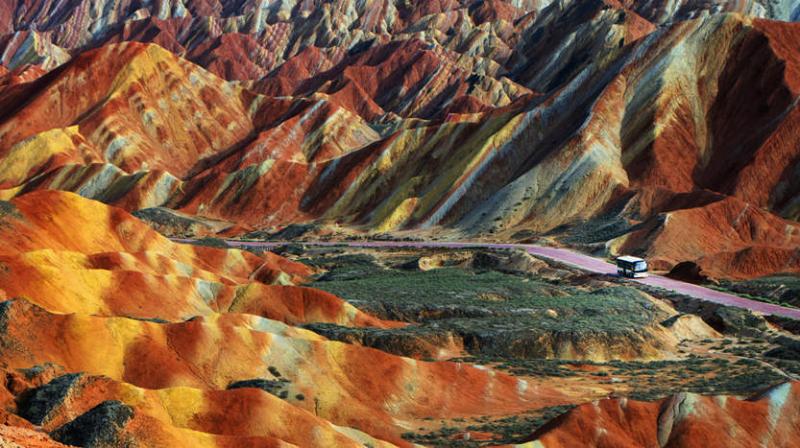China Silk Road at a Glance
Overview

China Silk Road from its starting point Xian to its China most west point Kashgar is around 3800km via Hexi corridor and over Xinjiang vast land. A trip to cover the whole route takes more than 15 days and with high cost. This 10 days budget Silk Road journey will take you to the most important hubs on ancient Silk Road, including Xian, Zhangye, Dunhuang and Turpan. Combining flights and high speed train travels, you can enjoy an affordable rate for a lifetime experience tour.
Best for: Couples, Family, Seniors
Duration: 10 days & 9 nights
Destinations: Xian - Zhangye - Dunhuang - Turpan
Travel Type: Private tour - Flexible & Free to customize
Highlights:
• Can't be missed Terracotta Warriors, Dunhuang Mogao Caves
• Incredible landforms of Rainbow Mountains and Gobi Desert
• Get close to local people with home visit
• Food adventure for best know Chinese cuisine and snacks
Customize Your Tour:
☑ Travel Dates ☑ Your Interests ☑ Your Travel Style
Itinerary Expand All
As the capital of six ancient dynasties and the starting point of the ancient Silk Road to the west, Xian is a must-visit city no matter you’re coming for sightseeing, or want to discover and study the myth of the history as an archeologist or historian. A deep exploration in Xian will lead you to lift the veil of the ancient Silk Road.
Upon arrival Xian, you will be welcomed by your guide and then transfer to hotel. Free at leisure for rest of the time.
Visit the must-see Terracotta Warriors Museum in the morning with a one hour drive out of the downtown. You will visit the three pits containing the Terracotta Army held more than 8,000 soldiers, 130 chariots with 520 horses, and 150 cavalry horses and they are still under excavated. Return to downtown in the afternoon and visit Big Wild Goose Pagoda. The pagoda was built in Tang Dynasty and one function was to keep sutras and figurines of Gautama Buddha brought back to China from ancient India by Xuanzang via the Silk Road. Take a home visit to local family and learn to make Chinese dumplings from the host. It’s also good chance to chat with the family members on any topics you’re interested in China. Enjoy delicious dumplings you made for dinner.
Meal: B, L, D

Visit Shaanxi History Museum, one of the best museums of China. It houses over 370,000 items, including murals, paintings, pottery and bronze, gold and silver objects unearthed in Shaanxi Province mainly. Later, visit the Ancient City Wall, the oldest, largest and best preserved Chinese city walls. Take a walking on the way or you can rent a bike for a riding, which is 13.74km in total (you can finish at any one of 4 gates). In the afternoon, visit the Bell Tower and Grand Mosque at Muslim Quarters. The Grand Mosque (also known as Huajue Mosque) combines a traditional Chinese architectural form with Islamic functionality. Later, take a walk in the old quarters to learn how Chinese Muslim people’s lives like and try different snacks.
Meal: B, L
Today you will fly to Zhangye by flight. Before going to the airport, visit Han Yang Ling (or Yang Mausoleum of Han Dynasty), the tomb of Emperor Jing and his Empress Wang. Similar to the Mausoleum of Qingshihuang, many terracotta figures have been found in the bomb, but all of them are miniature ones at around 60cm in height. As one of the most prosperous eras in Han Dynasties, Emperor Jing built his mausoleum in a much less luxury style. Walking on the glass floor, you can see the excavation site.
Meal: B

Visit Zhangye Danxia Landform National Geopark this morning. Also named as the Rainbow Mountains China, this colorful mountains enjoys the honors of “the world top ten magical geographical wonders”, and it is one of the best photographing sites in the world. Later, visit Dafosi (Giant Buddha Temple). Take afternoon train to Dunhuang.
Meal: B, L

This morning, you will visit Mogao Grottoes, the 492 cells and cave sanctuaries in Mogao are famous for their statues and wall paintings, spanning 1,000 years of Buddhist art. Then go to Dunhuang Museum, which reflects the flourishing social development and cultural exchange between China and the West during the time when Dunhuang was a major center along the Silk Road. Echoing Sand Dunes or Mingsha Mountain, is a unique desert right at the edge of the city. You will visit Crescent Lake first and then ride camel to top of the dunes for sun-set view. Desert activities like sand sliding are fun for children. After the visit, go to Shazhou night market for dinner (not included) and free shopping.
Meal: B, L

Check out after breakfast and then drive one hour to the Great Wall of Han Dynasty. You will take a moderate one hour walking trip starting from this historical wall used to be the route marking of the ancient Silk Road. Walk around 5km to get to Yumen Pass for a visit. After the visit, go for a home visit to a local family in oasis and have lunch under grape vine. Transfer to train station for train to Turpan in the late afternoon.
Meal: B, L
Tips for walking on Gobi desert:
1. It’s suggested to wear ankle boots to protect your ankle. Sand desert occupies only 30% of Gobi territory, and the rest is uneven with stones. Avoid mesh shoes to prevent sands going into your shoes.
2. Prepare sunscreen to protect you from strong sunlight. And additionally, long trousers, long sleeves and hats can offer more protection.
3. In windy days, a magic scarf can help you from the wind and sand dust.
4. Don’t touch the plants on Gobi desert before making sure they’re safe.
After breakfast, you will drive 70km east out Turpan city to Tuyoq (or Tuyugou Valley), an ancient oasis-village in the Taklamakan desert. It is well noted with the seedless grapes and Buddhist meditation caves. Later, you will visit Astana Ancient Tombs, the graves are the cemetery of the ancient Gaochang residents. 456 tombs have been excavated since 1950's, and more than 10000 pieces of archaeological finds were discovered here. Continue drive to Bezeklik Thousand Buddha Caves,which is located at northwestern side of the Flaming Mountain, they are complex of Buddhist cave grottos dating from the 5th to the 13th centuries. These caves were built on a cliff face fronting a river valley.
Meal: B, L
Visit Emin Minaret and Karez Irrigation System this morning. Emin Minaret is an existing largest minaret in Xinjiang with a circular shape. It is 44 meters high with a diameter of 10 meters. The huge structure was built of grey bricks and earth in 15 different decorative patterns such as waves, flowers or rhombuses. Karez Irrigation System was created by ancient Uygur people at the second half of 18th century. If connecting all these underground channels together, the total length will reach more than 5000 km, so it is regarded as one of ancient China's greatest public projects. Today’s highlight is Jiaohe Ruins (Yarkhoto), a ruined city in the Yarnaz Valley. Jiaohe was the capital of the Anterior Jushi Kingdom (108BC - 450AD). It was an important site along the Silk Road trade route leading west, and was adjacent to the Korla and Karasahr kingdoms to the west.
Meal: B, L
Transfer to airport for flight to Xian, Beijing or Shanghai via Lanzhou.
If you want to explore more of the Silk Road to the west, an extension trip to Urumqi, Kashgar, Khotan can be customized for you.
Meal: B






